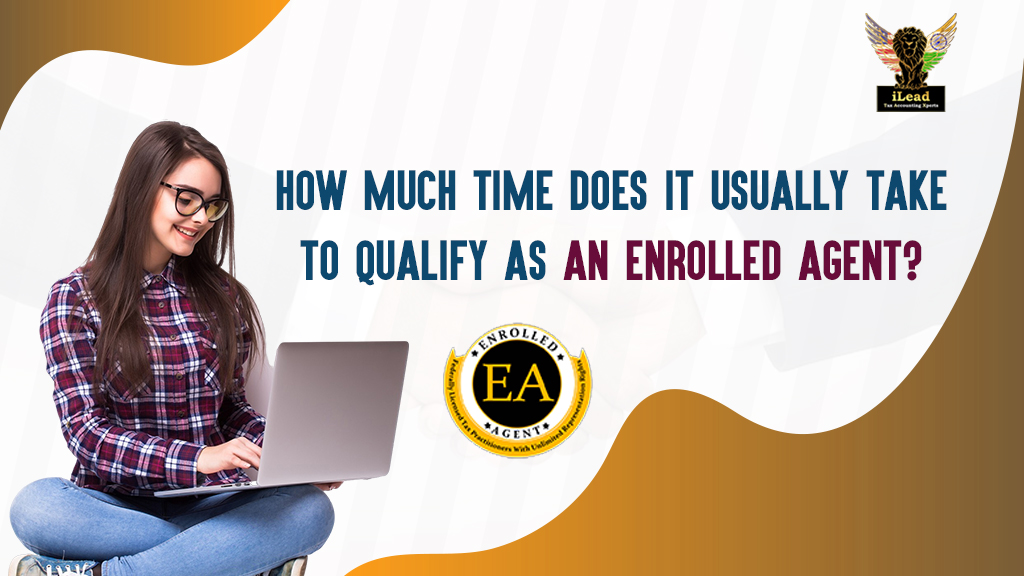Want to become an enrolled agent? Wondering how long it takes? Well, you’re in the right place.
In this article, we’ll break down the timeline for becoming an EA, including the education and experience requirements, as well as the exams you’ll need to pass.
We’ll also provide you with resources to help you prepare for the exams.
So, let’s get started on your journey to becoming an enrolled agent! If you’re seeking guidance from a USA taxation course, enrolling in an expert-led program like the Certified Enrolled Agent Academy could provide invaluable support.
Education Requirements
To become an enrolled agent, you’ll need to meet specific education requirements. The certification process involves completing a comprehensive three-part exam administered by the Internal Revenue Service (IRS).
The first part of the exam covers individual taxation, while the second part focuses on business taxation. The third part covers representation, practice, and procedures. Each part consists of multiple-choice questions that test your knowledge and understanding of tax laws and regulations.
Once you pass the exam, you must also fulfill continuing education requirements to maintain your enrolled agent status. This involves completing 72 hours of approved continuing education courses every three years. These courses help you stay up-to-date with changes in tax laws and regulations so that you can provide accurate and reliable tax advice to your clients.
Experience Requirements
Once you have successfully completed the education requirements and passed the comprehensive three-part exam, you can now focus on meeting the experience requirements to become an enrolled agent.
Work experience plays a vital role in becoming an enrolled agent, as it demonstrates your practical understanding and application of tax laws and regulations.
To meet the experience requirements, you need at least five years of work experience in a tax-related field. This can include positions such as tax preparer, tax consultant, or tax accountant.
Additionally, you must also possess professional qualifications, such as a Certified Public Accountant (CPA) license or a law degree. These qualifications help ensure that you have the necessary knowledge and skills to effectively represent taxpayers before the IRS.
Enrolled Agent Exams
To become an enrolled agent, you must successfully pass the comprehensive three-part exam. This exam is administered by the Internal Revenue Service (IRS) and consists of three sections: Individuals, Businesses, and Representation, Practice, and Procedures.
Each section is timed and covers different aspects of tax law and regulations. It’s important to prepare thoroughly for the exams, as they require a deep understanding of tax laws and regulations. Many aspiring enrolled agents choose to enroll in preparatory courses or study programs to enhance their chances of success.
Passing the enrolled agent exams is a crucial step towards obtaining your enrolled agent certification. With this certification, you can provide tax services to individuals, businesses, and represent clients before the IRS.
The salary of an enrolled agent can vary depending on factors such as experience, location, and the size of the firm they work for. However, it’s generally considered a lucrative career in the tax industry.
Timeline for Becoming an EA
As you progress through the process of becoming an enrolled agent, your timeline will depend on various factors such as your preparation, study habits, and the availability of exam dates.
On average, individuals commit around 100-150 hours of study time to prepare for each exam.
The application process itself consists of a few steps. First, you need to obtain a Preparer Tax Identification Number (PTIN) from the IRS. Then, you must pass all three parts of the Special Enrollment Examination (SEE). After passing the exam, you’ll need to complete and submit Form 23 to apply for enrollment.
It’s important to note that exam dates are limited and can vary depending on the testing center. Therefore, planning and scheduling your exams in advance will help you stay on track with your timeline. Seeking guidance from a USA taxation course, enrolling in an expert-led program like the Certified Enrolled Agent Academy could provide invaluable support throughout this process.
Resources for Exam Preparation
To prepare for the Special Enrollment Examination and become an enrolled agent, you’ll need to utilize various resources for exam preparation. There are several study techniques and recommended study materials that can help you succeed in the exam.
One effective study technique is creating a study schedule and sticking to it.Utilizing this approach will assist you in staying organized and ensuring thorough coverage of all necessary topics.Additionally, it’s advisable to use study materials that are specifically designed for the enrolled agent exam.Typically, these materials comprise textbooks, practice exams, and online resources. Some popular study materials include the Internal Revenue Service’s (IRS) Enrolled Agent Exam Study Guide and the Gleim EA Review System.
Conclusion
In conclusion, becoming an Enrolled Agent requires a combination of education and experience. You must meet the education requirements, gain relevant experience, and pass the Enrolled Agent exams.
The timeline for becoming an EA can vary depending on individual circumstances, but with dedication and preparation, it’s an achievable goal. Utilizing resources for exam preparation can greatly enhance your chances of success.
Overall, becoming an Enrolled Agent is a rigorous process that requires commitment, but it can lead to a rewarding career in tax representation.

